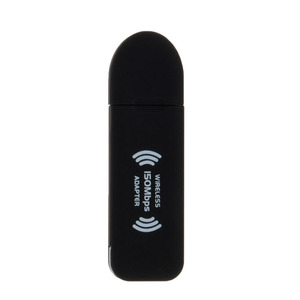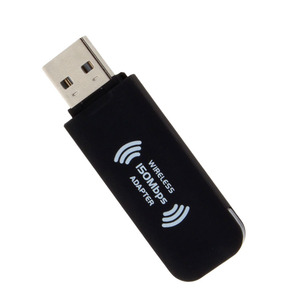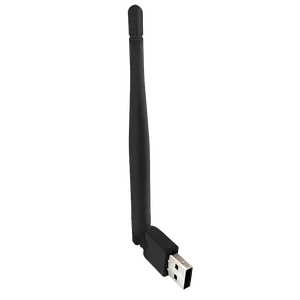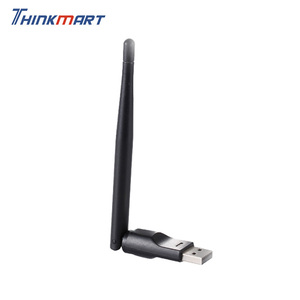(78 products available)



























































































































































































































The RT5370 chipset USB wireless adapter is available in a few varieties. These depend on the wireless standard they support, the frequency band they operate on, and their physical design.
Wireless standard
The adapter can support the 802.11n or 802.11g standard. The 802.11n standard is the latest wireless networking standard. It offers higher maximum data transfer speeds and extended range, especially in obstructions or longer-distance connections. The maximum speed of the 802.11n adapter can be up to 150 Mbps. However, it may use a 2.4 GHz frequency. The previous 802.11g standard is only capable of a maximum speed of 54 Mbps, and it operates on the 2.4 GHz frequency band.
Frequency band
The adapters operate on the 2.4 GHz frequency band. However, some advanced models can operate on the 5 GHz frequency band. Wireless communication may experience interference when operating on the 2.4 GHz frequency. This is because, with 2.4 GHz, there are many channels where interference may occur. The adapter can avoid the interference and noise by using the 5 GHz frequency, where there are fewer channels.
Physical design
The RT5370 chipset USB wireless adapter is available in various designs. It can come in the form of a small flash drive-like device. It is simple to plug into the device's USB port. Some adapters can also come in the form of a larger device with an antenna. The antenna can be either detachable or fixed. With the antenna, the wireless adapter can get better connectivity and range.
Wireless adapters built on the RT5370 chipset come with features that are similar to those offered by adapters built on other chipsets. These features include:
The RT5370 chipset USB wireless adapter has various uses. It is ideal for homes, offices, and schools because it is affordable, uncomplicated, and upgradeable. Here are some ways to leverage the USB wireless adapter:
Wireless Connectivity to Desktop Computers
Older desktop computers may not have built-in Wi-Fi capabilities. Therefore, the RT5370 wireless adapter is an economical means to enable users to surf the Internet, send emails, and access online media.
Wi-Fi Range Extender
Users can utilize affordable adapters to boost their network. Salvation comes from software solutions that allow adapters to repeat existing networks, bringing Wi-Fi to dead zones.
Security Monitoring
When combined with suitable software, inexpensive USB adapters can act as security cameras. They enable users to keep tabs on their property remotely.
Online Gaming
In past years, gaming was the domain of console and PC owners only. Yet, RT5370 chipset adapters allow affordable access to the online gaming world. These adapters provide instant internet access to gamers over wireless networks.
Digital Signage
For users who don't know, Digital Signage is the display of content on screens like TVs. USB adapters can power displays for Digital Signage solutions and provide internet access to update content remotely.
Adaptive Streaming
Sometimes, streaming on smart TVs can be impossible due to Wi-Fi restrictions. A USB adapter can enable a user to create a mobile hotspot for streaming capabilities, allowing seamless access to entertainment on adaptive devices.
USB Tethering
Driving down the road, a user might need Wi-Fi to connect their laptop. Using USB tethering, RT5370 USB adapters can provide internet access from a mobile phone to a computer to bridge the gap.
Know the range of the adapter:
When selecting a USB adapter for wireless connections, thoroughly research and assess available options to ensure a well-informed decision. Consider adapters tailored for specific environments, as some adapters excel in providing wireless connectivity over extended ranges, while others are optimized for short-distance connections. Adapters engineered for long-range capabilities often feature advanced antenna systems, powerful amplifiers, and sophisticated signal processing technologies. These enhancements enable them to overcome physical obstacles like walls, furniture, and other obstructions commonly found in indoor spaces, thereby extending the reach of wireless signals. On the other hand, adapters designed for short-range connections may prioritize compactness, simplicity, and cost-effectiveness. While they may be sufficient for connecting devices located relatively close to the Wi-Fi router or access point, they might struggle to maintain a stable connection or achieve optimal speeds in longer-distance setups. To choose the most suitable adapter, consider factors such as the layout of the premises, distances involved, and potential obstacles that could interfere with wireless signals. If needing to connect devices located far from the Wi-Fi source or in areas with signal blockage, selecting a long-range adapter would be a wise choice. However, if all connections will be within short distances without significant obstructions, a short-range adapter can meet the basic connectivity requirements efficiently.
Know the speed of their connection:
The wireless networking standard plays a crucial role in determining the speed and performance of a USB wireless adapter connection. Adapters that support the latest standard, such as 802.11ac or 802.11ax (Wi-Fi 5 or Wi-Fi 6), offer significantly higher speeds and improved performance compared to older standards like 802.11n, 802.11g, or 802.11b. The 802.11ac standard operates in the 5GHz frequency band, providing faster speeds and better performance, especially in areas with less wireless interference. On the other hand, the 802.11ax standard, also known as Wi-Fi 6, operates on both 2.4GHz and 5GHz bands, offering even higher speeds, better range, and improved efficiency in crowded Wi-Fi environments. It's important to note that device compatibility is essential for taking full advantage of the speed and performance benefits offered by newer wireless standards. While a USB wireless adapter supporting the latest standard may provide higher speeds, the overall connection performance will also depend on the wireless router or access point's compatibility with the same standard. To ensure optimal performance and maximize wireless connection speed, use a USB wireless adapter supporting the latest wireless standard with a compatible router or access point. This way, one can fully benefit from the enhanced speed, range, and performance offered by the newer wireless technology.
Know what else the adapter can do:
When choosing a RT5370 chipset USB wireless adapter, it is essential to consider not only its basic functionality but also additional features that can enhance the user experience and meet specific needs. These extra features may include capabilities such as dual-band support, security protocols, antenna design, or range-extending technologies like MIMO and beamforming. Dual-band support allows the adapter to operate on both the 2.4GHz and 5GHz frequency bands, providing greater flexibility and the ability to connect to the less congested 5GHz band for faster speeds, if supported by the router. Security protocols like WPA3 offer enhanced security compared to older protocols, protecting sensitive data during wireless transmission. A detachable antenna design provides the advantage of being able to upgrade or replace antennas for improved signal strength and range. Technologies such as MIMO (Multiple Input, Multiple Output) and beamforming can optimize wireless performance by increasing data throughput and extending the effective range of the adapter respectively. By considering these additional features, one can choose an adapter that best suits the wireless needs and preferences, ensuring a better overall experience.
Q: What is the RT5370 chipset's maximum speed?
A: The USB adapter with RT5370 can provide a maximum speed of 150 Mbps. This is the maximum speed that can be attained; actual speeds may differ depending on other factors like the network's strength and configuration.
Q: Does an RT5370 chipset support WPA2?
A: Yes, it is compatible with WPA2 and other security protocols like WPA, WEP, and 802.1x.
Q: Is the RT5370 chipset dual-band?
No, this chipset works only on the 2.4 GHz band of the wireless network. It is not a dual-band device.
Q: What kind of antenna does the RT5370 chipset use?
A: The RT5370 wireless adapter can use either a built-in antenna or a removable external antenna. Whenever the antenna is an external one, it must be compatible with the 2.4 GHz frequency.